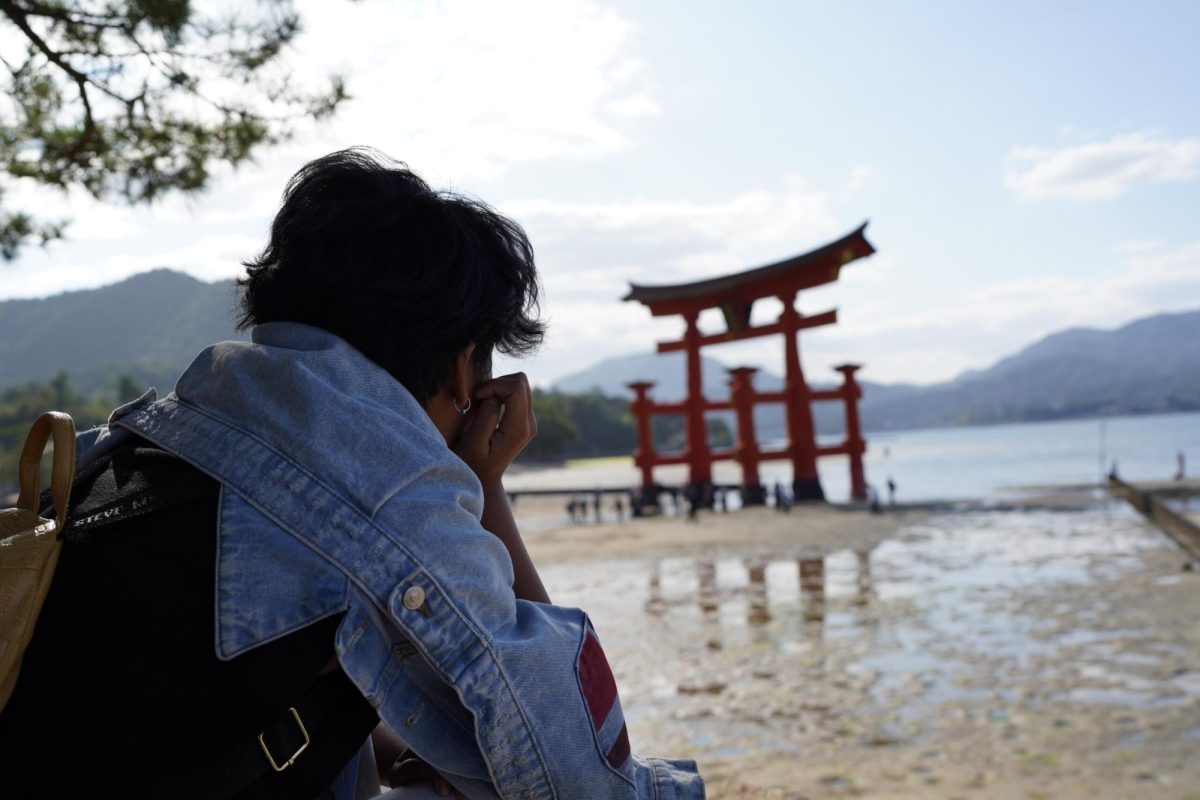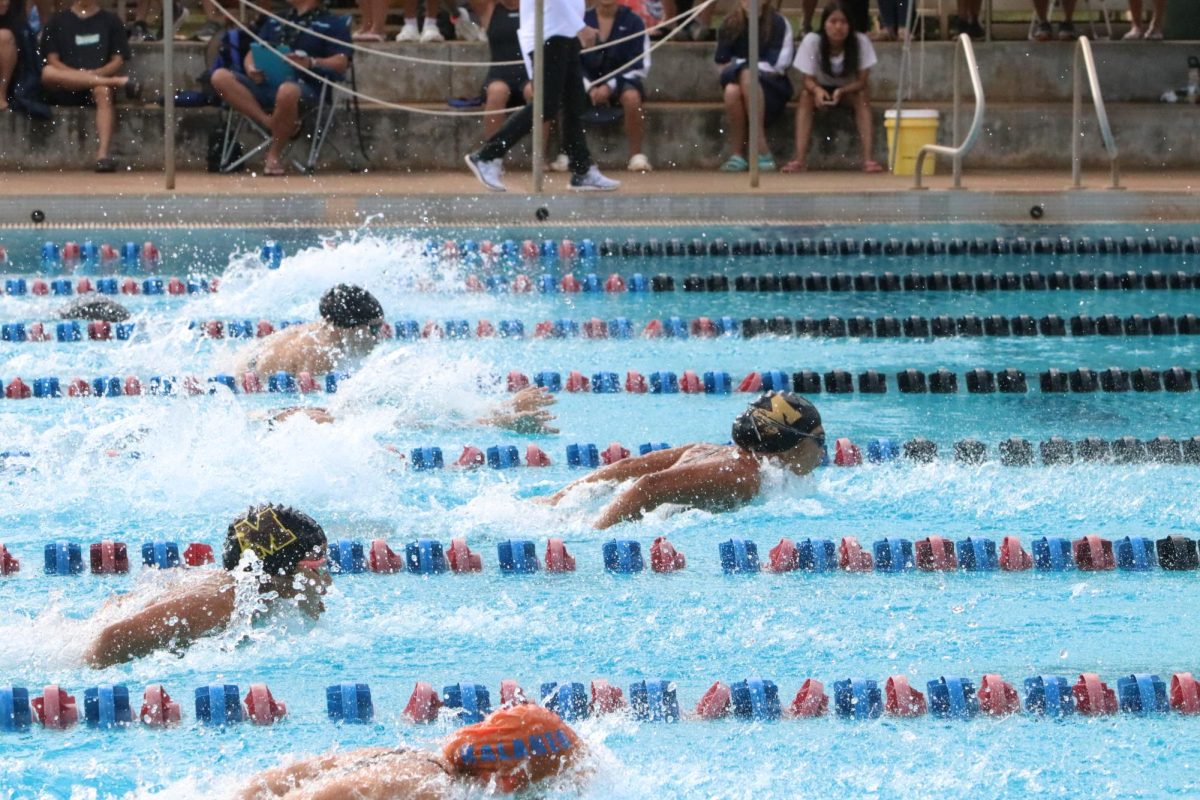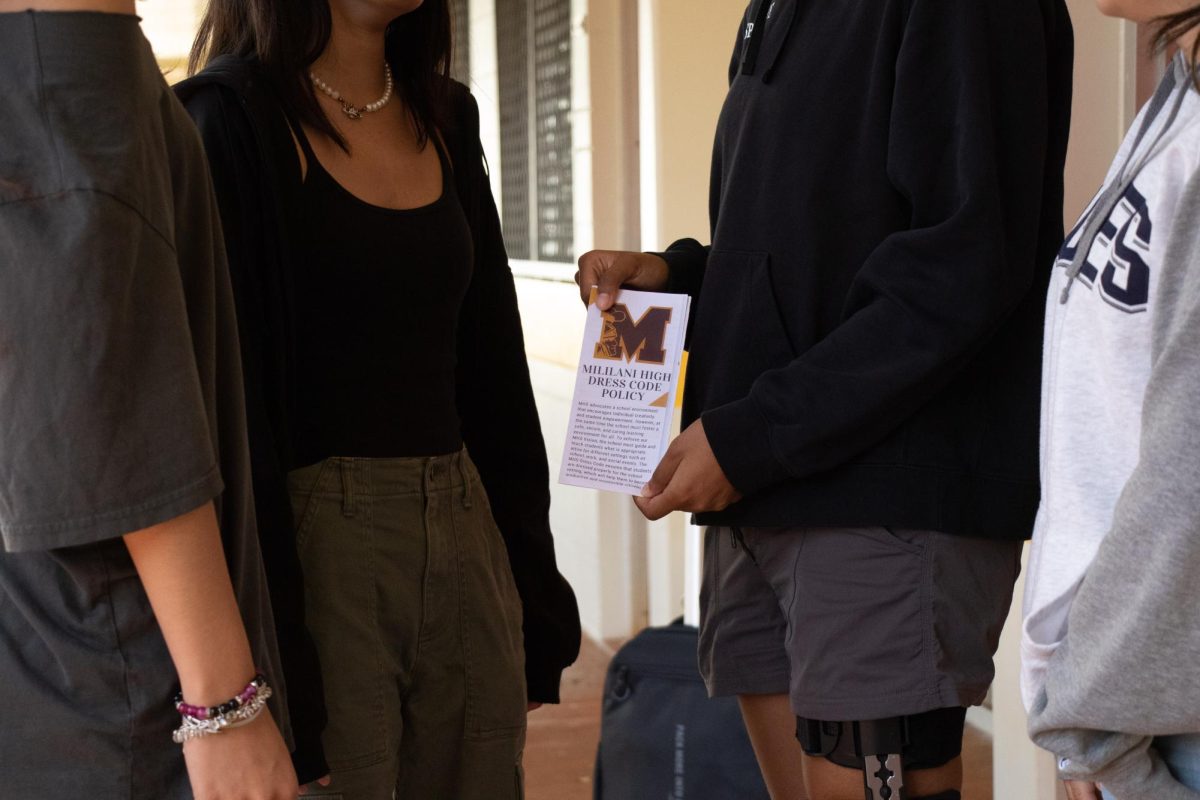Melvin Hayas: Continuing Japanese Traditions for 40 Years
April 16, 2018
Melvin Hayase, born in Hana, Maui on Feb. 29, 1940, has been a resident of Mililani for over 40 years. Having played a big part in founding the Mililani Hongwanji, Hayase has contributed largely to the establishment and the continuation of the community’s annual bon dance. 2018 is the 140th anniversary of Japanese immigration to Hawaii, and Hayase has been heavily influenced by its culture both growing up and transitioning into a parent.
“We were all born in Hana, my whole family was born in Hana, Maui, and so they were still living in Hana, and I was born there, until I moved to Wailuku on Maui when I was one. And so, I was greatly influenced by my issei grandparents and my parents. Of course they spoke Japanese mostly; my grandparents and parents spoke to each other in Japanese mostly but a lot of Pidgin in between. So I grew up with that kind of English, Japanese, Pidgin kind of language,” said Hayase.
Growing up, Hayase was taught through the lens of traditional Japanese values and customs, which had an effect on him when he became a parent. “So what else would influence me as a parent? My culture? Giving. Sharing and giving, I think that was a culture. My father was a tuna fisherman and growing up in Wailuku, he used to come home once a week, usually on Friday night or Saturday,” said Hayase. “He would be cleaning the fish, cutting the fish. And he would always, at the end, after he slices all the fish, nice pieces of sashimi, he would say, ‘Okay, Melvin you take these to the Wong’s across the street’ or ‘Okay, Melvin you take these to the Fukunaga’s,’ our neighbors on the other side. So whatever, we had, all the stuff we had we shared with the people around us.”
Hayase’s belief in preserving the Japanese culture is something he felt was essential to his community and family, in addition to the merging of American and Japanese traditions he’s seen throughout the years. “The sense of family (is important). The sense of, ‘I belong, I’m not just my own, I’m not just my own family, but I belong to a community, a community of people.’ And for the Japanese, as the generations moved away from the first generation, initially the family was you, your neighborhood, your extended family and your neighborhood and the Japanese community. And so that was all very important,” said Hayase.
The Buddhist faith had always been an important part of Hayase’s life, which he practiced from the time he was a child. This led him to establishing the Mililani Hongwanji 40 years ago. “Mililani Hongwanji, since it’s beginning; I’m one of several of the original founders of the temple. We celebrated our 40th anniversary this year (2017), so the official incorporate, whenever we became a charter organization, was 40 years ago. But we sort of existed informally before that,” said Hayase. “Some of us got to know each other because we’re Buddhist, and so we wanted to talk story. There’s no church or anything here so we just kind of got together, and some of those people I knew from before.”
The Hongwanji helped to introduce some Japanese traditions into the relatively new Mililani community. “We did what was familiar to us, and bon dance was one of them as well as when we had different types of fundraisers where we’d do things like make sushi, because we knew how to make sushi—we didn’t know how to make anything else. So we did those kinds of things, the food, the dancing, at one time there was a group of members who would sing karaoke, we’d invite whoever wanted to join us in singing, so you know, just those kinds of things,” said Hayase.
Traditionally, bon dances were rooted heavily in the Buddhist religion and was a time to celebrate one’s ancestors. However, after time and localization, the event has evolved. “You see when I grew up, bon dancing it was more traditional, and if you wanted to dance, you had to wear either kimono or happi coat, you had to have that kind of outfit on,” said Hayase. “And I think that pretty much was the rule, I know when we started the bon dance, it tended to be like that, but we made it very clear from the beginning that let’s be more welcoming, let’s let anybody who wants to dance, dance, as long as they have, you know, clothes on.”
Some of Hayase’s fondest memories of the Hongwanji come from the annual bon dances. “We danced around (the yagura) and one of our members was a gal from, she was a Buddhist but from Thailand, and of course bon dances aren’t common to Thai people, and but so, she was willing to dance bon dances and she even taught us a Thai dance, and we danced around the circle. I thought that was unique because you don’t normally see non-Japanese bon dances, but this was a Thai bon dance,” said Hayase.
As he gets older, Hayase has focused on passing on responsibility in the church to other members. “I had to take care of (my wife), so in my responsibility to take care of her I couldn’t do the things I used to do for the temple, and so I just gradually didn’t accept doing things or resigned from certain positions and that’s how I gradually got out. Over the years that that has happened, I realized that when you leave, when you’ve been in a place for so long and you leave, somebody else will fill it in,” said Hayase.
Hayase is now retired and enjoying his life in Mililani. While he continues to help out with the bon dance, he is weaning himself out and passing on the torch.
-#####-




